On a good night, with the right company and a suitable amount of alcohol, Nina was very amusing. She was always on show, always playing to the crowd, and at her best she aabove me posing as part of the nina world gave command performances. With a little too much to drink she could be disconcerting
gave command performances. With a little too much to drink she could be disconcerting
 Nina Hamnett (14 February 1890 – 16 December 1956) was a Welsh artist and writer,
Nina Hamnett (14 February 1890 – 16 December 1956) was a Welsh artist and writer, and an expert on sailors' chanteys, who became known as the Queen of Bohemia.
and an expert on sailors' chanteys, who became known as the Queen of Bohemia.
Hamnett was born at No.3, Lexden Terrace, Tenby, West Wales Hamnett was born in the small coastal town of Tenby, Pembrokeshire, southwest Wales. From 1906
Hamnett was born in the small coastal town of Tenby, Pembrokeshire, southwest Wales. From 1906  to 1907 she studied at the Pelham Art School and then at the London School of Art until 1910.
to 1907 she studied at the Pelham Art School and then at the London School of Art until 1910.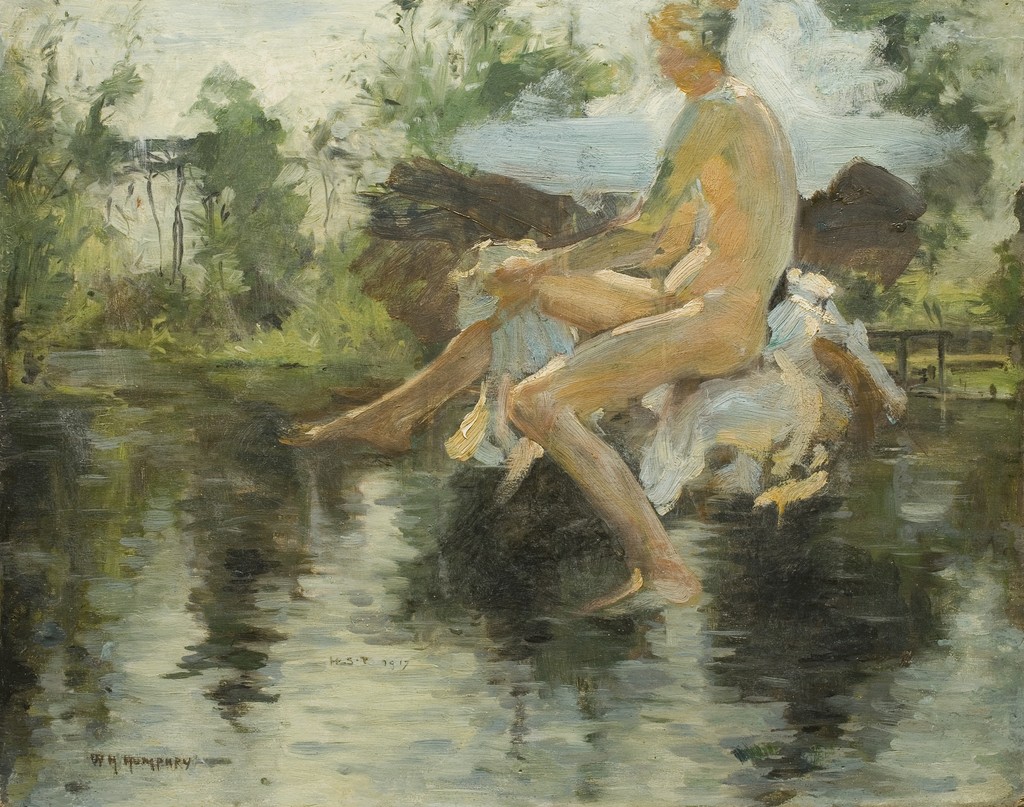 In 1914 she went to the Montparnasse Quarter in Paris, France
In 1914 she went to the Montparnasse Quarter in Paris, France to study at Marie Vassilieff's Academy
to study at Marie Vassilieff's Academy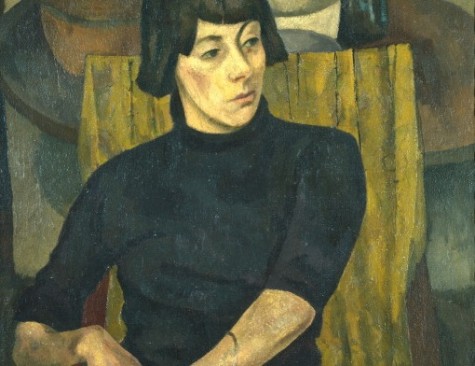 .
.
While studying in London she met and posed for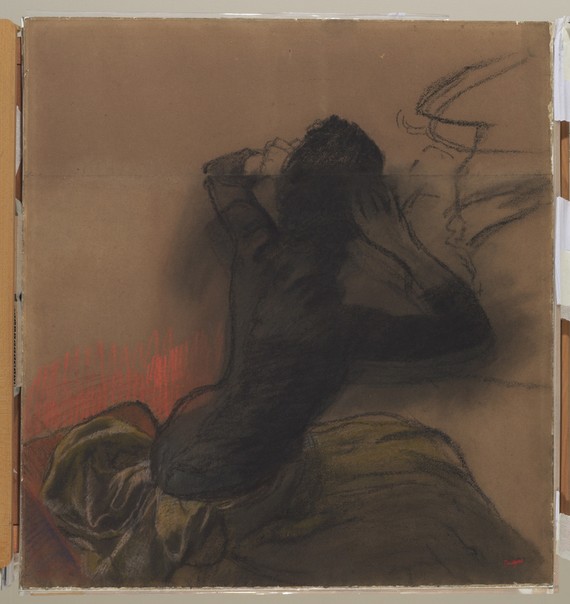 Henri Gaudier-Brzeska who sculpted a series of nude bronzes. During this period she became friendly with Olivia Shakespear
Henri Gaudier-Brzeska who sculpted a series of nude bronzes. During this period she became friendly with Olivia Shakespear and Ezra Pound. She went on to have a love affair with Brzeska, and later with Modigliani and Roger Fry
and Ezra Pound. She went on to have a love affair with Brzeska, and later with Modigliani and Roger Fry
On her first night in the Bohemian community she went to the café La Rotonde where the man at the next table introduced himself as "Modigliani, painter and Jew". In addition to making close friends with Amedeo Modigliani, Pablo Picasso, Serge Diaghilev, and Jean Cocteau, she stayed for a while at La Ruche with many of the leading members of the avant-garde living there at the time. In Montparnasse she also met
where the man at the next table introduced himself as "Modigliani, painter and Jew". In addition to making close friends with Amedeo Modigliani, Pablo Picasso, Serge Diaghilev, and Jean Cocteau, she stayed for a while at La Ruche with many of the leading members of the avant-garde living there at the time. In Montparnasse she also met 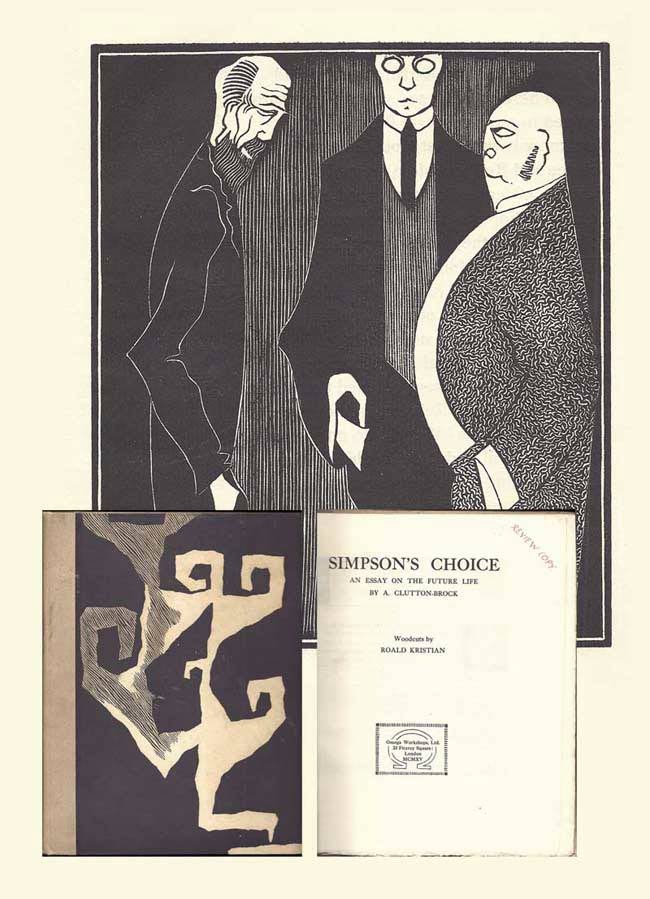 her husband, the Norwegian artist Roald Kristian.
her husband, the Norwegian artist Roald Kristian.
Located at 105, Boulevard du Montparnasse, La Rotonde
Flamboyantly unconventional, and openly bisexual, Nina Hamnett once danced nude on a Montparnasse café table just for the "hell of it". She drank heavily, was sexually promiscuous, and kept numerous lovers and close associations within the artistic community. Very quickly, she became a well-known bohemian personality throughout Paris and modeled for many artists. Her reputation soon reached back to London, where for a time, she went to work making or decorating fabrics, clothes, murals, furniture, and rugs at the Omega Workshops, which was directed by Roger Fry, Vanessa Bell, and Duncan Grant.
Her artistic creations were widely exhibited during World War I including at the Royal Academy in London as well as the Salon d'Automne in Paris. Back in England, she taught at the Westminster Technical Institute from 1917 to 1918. After divorcing Kristian, she took up with another free spirit, composer E. J. Moeran.
From the mid 1920s until the end of World War II, the area known as Fitzrovia was London's main Bohemian artistic centre. The place took its name from the popular Fitzroy Tavern
was London's main Bohemian artistic centre. The place took its name from the popular Fitzroy Tavern  on the corner of Charlotte and Windmill Streets that formed the area's centre. Home of the café life in Fitzrovia, it was Nina Hamnett's favourite hangout as well as that of her friend from her home town, Augustus John, and later another Welshman, the poet Dylan Thomas.
on the corner of Charlotte and Windmill Streets that formed the area's centre. Home of the café life in Fitzrovia, it was Nina Hamnett's favourite hangout as well as that of her friend from her home town, Augustus John, and later another Welshman, the poet Dylan Thomas.
In 1932 Hamnett published Laughing Torso, a tale of her bohemian life, which became a bestseller in the United Kingdom and United States. The notorious occultist Aleister Crowley unsuccessfully sued her and the publisher for libel over allegations of Black Magic made in her book.
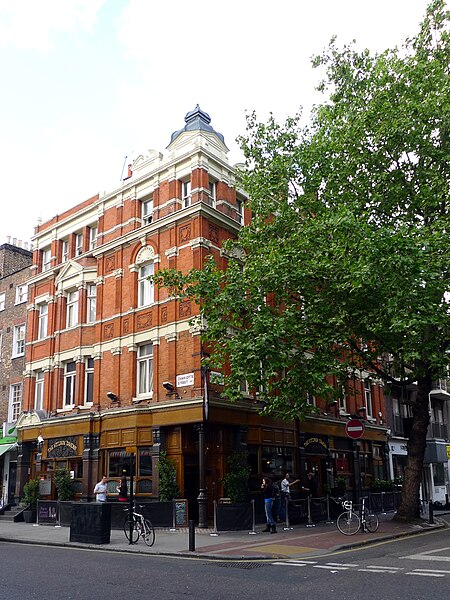 , trading anecdotes for drinks.
, trading anecdotes for drinks.
The Fitzroy Tavern is a public house situated at 16 Charlotte Street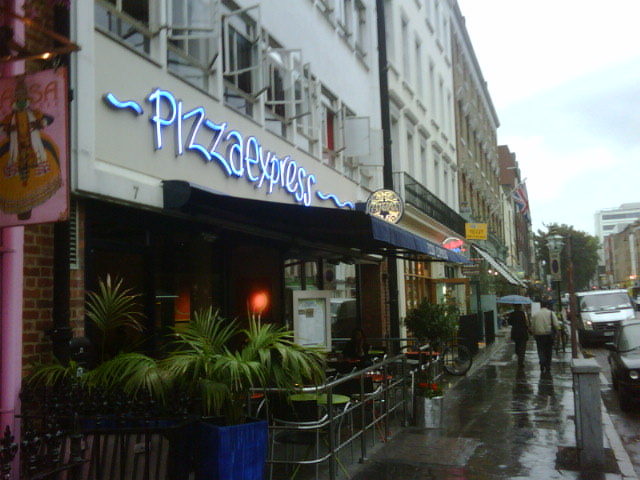 in the Fitzrovia district of central London, England, to which it gives its name.
in the Fitzrovia district of central London, England, to which it gives its name.
It is currently owned by the Samuel Smith Brewery. It became famous during a period spanning the 1920s to the mid 1950s as a meeting place for many of London's artists, intellectuals and bohemians such as Dylan Thomas, Augustus John, and George Orwell.
It is named either directly or indirectly after the Fitzroy family, Dukes of Grafton, who owned much of the land on which Fitzrovia was built.
The building was originally constructed as the Fitzroy Coffee House, in 1883, and converted to a pub (called “The Hundred Marks”) in 1887, by William Mortimer Brutton. In the early years of the 20th century, Judah Morris Kleinfeld purchased it. He rebranded it "the Fitzroy Tavern" in March 1919. His daughter Sally Fiber who worked behind the bar from a very young age eventually wrote a history of the pub autobiograhy of a London Tavern" with the help of Clive Powell-Williams. "The Fitzroy: The Autobiograpy
There are photographs on the walls of both Micheal Bentine and Dylan Thomas drinking in the pub. There is also a photograph of George Orwell (but not actually sitting in the pub). One of the reasons for the pub reputedly being so popular with Orwell and Thomas is its proximity to Broadcasting House and Langham Place - both worked for the BBC in the 1940s and '50s and the pub continues to be popular with media types.
Given the pub's low prices and proximity to University College London, it is very popular with UCL students. English and History students in particular are known to be frequent visitors. The Cheese Grater, the alternative UCL student magazine, also holds weekly gatherings in the pub.
The Fitzroy Tavern has been a regular gathering place for fans of Doctor Who since the 1980s. Fans meet there, informally, on the first Thursday evening of each month.
Since 2000 it has been the home of the Pear Shaped Comedy Club which runs every Wednesday in This cheerless double-portrait portrays the real, if ambiguous, relationship between the married artists Nina Hamnett – the ‘Queen’ of bohemian London – and Roald Kristian. The withdrawn Kristian sinks into the chaise-longue, leaning back against the striped panelling of the wall, ponderously smoking with legs crossed. Near him on the couch, but remaining isolated herself, Hamnett too smokes a cigarette and strikes a rather self-confident pose with hand on hip. She later wrote of the painting: ‘We looked the picture of gloom.by walter sickert. ’the Twenty-three years after her first book Laughing Torso was published, Hamnett, in poor health, released a follow up book aptly titled: Is She a Lady?
Twenty-three years after her first book Laughing Torso was published, Hamnett, in poor health, released a follow up book aptly titled: Is She a Lady?
.Hamnett’s friendship with Sickert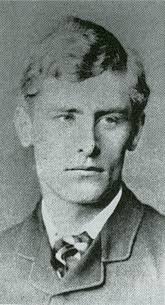 dated from 1911 when she regularly frequented the Saturday afternoon ‘At Homes’ in Fitzroy Street, a habit which persisted until after the First World War. Sickert enjoyed her company, although his wife Christine found her boisterous spirits at parties rather wearing. Sickert’s letters to Hamnett are written in an avuncular tone and contain warnings against squandering her energy on parties instead of painting. He did, however, hold a high opinion of her work, writing in the Cambridge Magazine in 1918:Nina Hamnett has shown at every stage of her rapid and somewhat turbulent development as a draughtsman and painter the possession of unmistakable power. An imperious instinct in the choice of her influences, a generous and frank surrender to such influences, and an almost indecent gluttony for work have placed her in a position that is, for an artist of her age, sufficiently brilliant, and to a critic of drawing and painting a tempting problem in hopes and fears
dated from 1911 when she regularly frequented the Saturday afternoon ‘At Homes’ in Fitzroy Street, a habit which persisted until after the First World War. Sickert enjoyed her company, although his wife Christine found her boisterous spirits at parties rather wearing. Sickert’s letters to Hamnett are written in an avuncular tone and contain warnings against squandering her energy on parties instead of painting. He did, however, hold a high opinion of her work, writing in the Cambridge Magazine in 1918:Nina Hamnett has shown at every stage of her rapid and somewhat turbulent development as a draughtsman and painter the possession of unmistakable power. An imperious instinct in the choice of her influences, a generous and frank surrender to such influences, and an almost indecent gluttony for work have placed her in a position that is, for an artist of her age, sufficiently brilliant, and to a critic of drawing and painting a tempting problem in hopes and fears
De Bergen, who sits slumped on the sofa with his legs crossed smoking a cigar, stares disconsolately in front of him, and could almost act as an understudy for the ‘Hubby’ role in Ennui c.1914 (Tate N03846, fig.1). Hamnett sits perched on the edge of her seat, leaning forward as though in the middle of saying something to the artist. She is fashionably dressed in a long coat with a full fur collar and a small hat covering her short hair. The couple are nominally turned in towards each other and de Bergen’s knee just overlaps the same pictorial space as Hamnett’s arm, but each displays negative body language towards the other and seems hardly to notice their spouse’s presence. There is a discrepancy between the perceived gaiety of the ‘tea party’ and the evident unease of the protagonists, seated in a gloomy, cheerless interior. Like the couple in Ennui, de Bergen and Hamnett are pictured as trapped together in a dysfunctional relationship which is draining their lives of colour and interest. Sickert has left the faces of his sitters blurred and incomplete, yet nevertheless has produced an insightful and telling portrait of the couple.
A biography, Nina Hamnett: Queen of Bohemia, by Denise Hooker was published in 1986.
In 2011 Nina Hamnett was the subject of a short film by writer/director Chris Ward 'What Shall We Do With The Drunken Sailor' starring Siobhan Fahey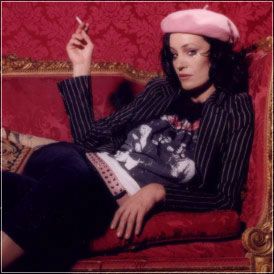 the singer of Bananarama and Shakespear's Sister fame.
the singer of Bananarama and Shakespear's Sister fame.
She made appearances in Soho as the arty crowd moved south of Oxford Street, but Nina in her last years was drunk and unpredictable, peeing on the furniture and throwing up in her handbag before staggering home to Paddington. Her second biography, Is She A Lady, was described as rambling, disjointed and inconsequential; sadly, so was Nina.
After his 1930’s one man show he won respect amongst his peers. In 1935, he and nine others, including Ben-Zion , Ilya Bolotowsky,
, Ilya Bolotowsky, Louis Harris, Jack Kufeld, Mark Rothko, and Louis Schanker, known as “The Ten” exhibited their works together until 1940. They would come to be known as the Abstract Expressionists.
Louis Harris, Jack Kufeld, Mark Rothko, and Louis Schanker, known as “The Ten” exhibited their works together until 1940. They would come to be known as the Abstract Expressionists.
From 1937-1939, Gottlieb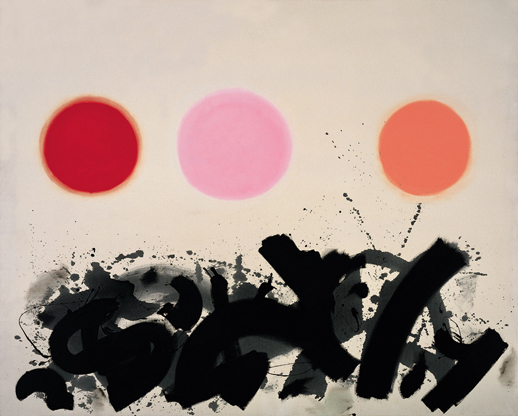 lived in the Arizona desert, and taking the cue from his environment he painted cacti and barren scenery. He transitioned from this into more Surrealist works like the Sea Chest which displays mysterious incongruities on an otherwise normal landscape. He expresses space most fully in his mature works. It is then that he conveys to the viewer the expansiveness he must have felt looking at Arizona desert sky, although he distills this expansiveness into a more basic abstract form.
lived in the Arizona desert, and taking the cue from his environment he painted cacti and barren scenery. He transitioned from this into more Surrealist works like the Sea Chest which displays mysterious incongruities on an otherwise normal landscape. He expresses space most fully in his mature works. It is then that he conveys to the viewer the expansiveness he must have felt looking at Arizona desert sky, although he distills this expansiveness into a more basic abstract form.
 gave command performances. With a little too much to drink she could be disconcerting
gave command performances. With a little too much to drink she could be disconcerting
hAMNETT BY Henri Gaudier-Brzeska (1891‑1915)
– as when she would boast that Modigliani said she had the best tits in Europe and pull up her old jersey to show them offthe figure is based on the painter Nina Hamnett, who danced naked in the studios of Paris. She had been admired by Isadora Duncan, the leading exponent of contemporary 'free' dance.. Nina Hamnett (14 February 1890 – 16 December 1956) was a Welsh artist and writer,
Nina Hamnett (14 February 1890 – 16 December 1956) was a Welsh artist and writer, and an expert on sailors' chanteys, who became known as the Queen of Bohemia.
and an expert on sailors' chanteys, who became known as the Queen of Bohemia.

 to 1907 she studied at the Pelham Art School and then at the London School of Art until 1910.
to 1907 she studied at the Pelham Art School and then at the London School of Art until 1910. In 1914 she went to the Montparnasse Quarter in Paris, France
In 1914 she went to the Montparnasse Quarter in Paris, France to study at Marie Vassilieff's Academy
to study at Marie Vassilieff's Academy .
.While studying in London she met and posed for
 Henri Gaudier-Brzeska who sculpted a series of nude bronzes. During this period she became friendly with Olivia Shakespear
Henri Gaudier-Brzeska who sculpted a series of nude bronzes. During this period she became friendly with Olivia Shakespear and Ezra Pound. She went on to have a love affair with Brzeska, and later with Modigliani and Roger Fry
and Ezra Pound. She went on to have a love affair with Brzeska, and later with Modigliani and Roger Fry
On her first night in the Bohemian community she went to the café La Rotonde
 where the man at the next table introduced himself as "Modigliani, painter and Jew". In addition to making close friends with Amedeo Modigliani, Pablo Picasso, Serge Diaghilev, and Jean Cocteau, she stayed for a while at La Ruche with many of the leading members of the avant-garde living there at the time. In Montparnasse she also met
where the man at the next table introduced himself as "Modigliani, painter and Jew". In addition to making close friends with Amedeo Modigliani, Pablo Picasso, Serge Diaghilev, and Jean Cocteau, she stayed for a while at La Ruche with many of the leading members of the avant-garde living there at the time. In Montparnasse she also met  her husband, the Norwegian artist Roald Kristian.
her husband, the Norwegian artist Roald Kristian.
The Little Tea Party: Nina Hamnett and Roald Kristian by Walter Richard Sickert -
(In Hemingway’s The Sun Also Rises, the character Jake Barnes states, "No matter whatcafé in Montparnasse you ask a taxi driver to bring you to from the right bank of the river, they always take you to the Rotonde.")Located at 105, Boulevard du Montparnasse, La Rotonde
was opened in 1911 by Victor Libion.
Libion’s cafe is renowned as having been a meeting spot for artists and writers during the interwar period. There were other popular cafes in the Montparnasse quartier—La Coupole and Libion’s Le Dôme—
and Libion’s Le Dôme— but La Rotonde was particularly endearing. It was a time of great poverty and many of these artistic men and women barely had a roof over their heads let alone money for food. Libion would allow these (literally) starving artists to sit in his café for hours with a ten-centime cup of coffee. He would turn a blind eye if the ends of the baguettes were stealthily removed. More importantly, if they did not have the money to pay for food he would hold the artist’s work as collateral and then graciously return the art when they were able to pay their bill. As result, La Rotonde
but La Rotonde was particularly endearing. It was a time of great poverty and many of these artistic men and women barely had a roof over their heads let alone money for food. Libion would allow these (literally) starving artists to sit in his café for hours with a ten-centime cup of coffee. He would turn a blind eye if the ends of the baguettes were stealthily removed. More importantly, if they did not have the money to pay for food he would hold the artist’s work as collateral and then graciously return the art when they were able to pay their bill. As result, La Rotonde  became a showplace for all of the great impressionist painters. The paintings on its walls are now copies, but you will find a good mix of art from its former patrons adorning the walls.
became a showplace for all of the great impressionist painters. The paintings on its walls are now copies, but you will find a good mix of art from its former patrons adorning the walls.
 and Libion’s Le Dôme—
and Libion’s Le Dôme— but La Rotonde was particularly endearing. It was a time of great poverty and many of these artistic men and women barely had a roof over their heads let alone money for food. Libion would allow these (literally) starving artists to sit in his café for hours with a ten-centime cup of coffee. He would turn a blind eye if the ends of the baguettes were stealthily removed. More importantly, if they did not have the money to pay for food he would hold the artist’s work as collateral and then graciously return the art when they were able to pay their bill. As result, La Rotonde
but La Rotonde was particularly endearing. It was a time of great poverty and many of these artistic men and women barely had a roof over their heads let alone money for food. Libion would allow these (literally) starving artists to sit in his café for hours with a ten-centime cup of coffee. He would turn a blind eye if the ends of the baguettes were stealthily removed. More importantly, if they did not have the money to pay for food he would hold the artist’s work as collateral and then graciously return the art when they were able to pay their bill. As result, La Rotonde  became a showplace for all of the great impressionist painters. The paintings on its walls are now copies, but you will find a good mix of art from its former patrons adorning the walls.
became a showplace for all of the great impressionist painters. The paintings on its walls are now copies, but you will find a good mix of art from its former patrons adorning the walls.
Montparnasse is most noted as the spot where painters, sculptors, writers, poets and composers flocked: they arrived from many places including Europe, Russia, the Ukraine, the United States, 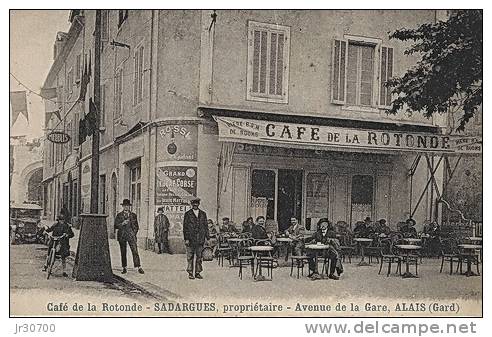 Canada, Mexico, Japan, Central and South America. Creativity was clearly embraced and each time a new artist arrived they were welcomed, despite politics or religion.
Canada, Mexico, Japan, Central and South America. Creativity was clearly embraced and each time a new artist arrived they were welcomed, despite politics or religion.  The list of individuals who congregated in Montparnasse has been a veritable who's who since the cafe opened its doors. Among
The list of individuals who congregated in Montparnasse has been a veritable who's who since the cafe opened its doors. Among  the famous are Pablo Picasso
the famous are Pablo Picasso , Ernest Hemingway
, Ernest Hemingway , Man Ray, Max Ernst, Henri Rousseau
, Man Ray, Max Ernst, Henri Rousseau , Henry Miller,
, Henry Miller,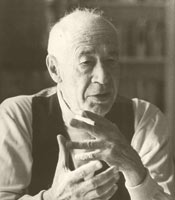 Gertrude Stein
Gertrude Stein ,Samuel Beckett,
,Samuel Beckett,  Fernand Léger
Fernand Léger , Henri Matisse
, Henri Matisse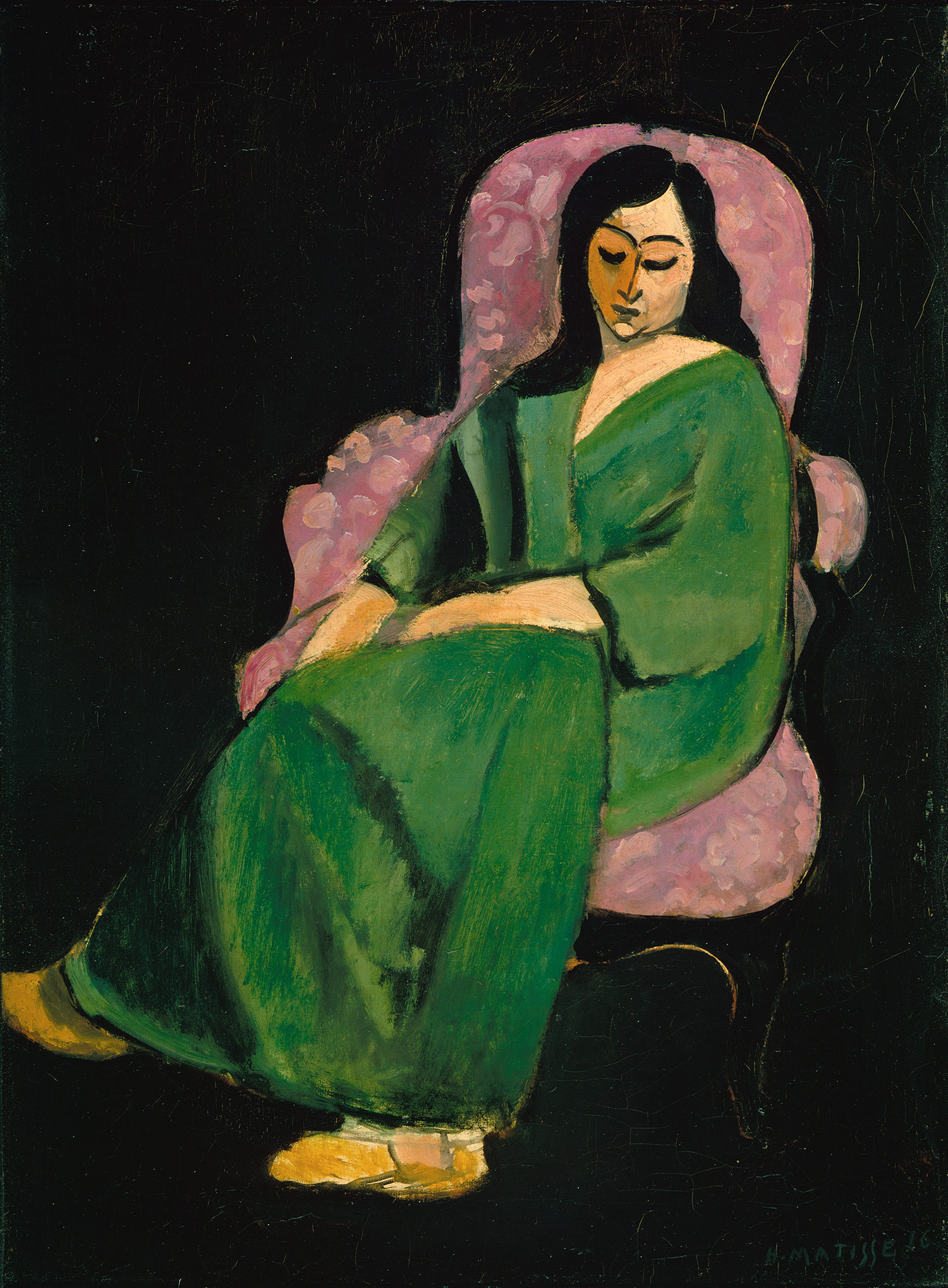 , Marc Chagall,
, Marc Chagall,  Edgar Degas,
Edgar Degas,  Diego Rivera
Diego Rivera  and Marcel Duchamp.
and Marcel Duchamp. One could say that this is where the art of meeting and interacting was born and refined.
One could say that this is where the art of meeting and interacting was born and refined.
 Canada, Mexico, Japan, Central and South America. Creativity was clearly embraced and each time a new artist arrived they were welcomed, despite politics or religion.
Canada, Mexico, Japan, Central and South America. Creativity was clearly embraced and each time a new artist arrived they were welcomed, despite politics or religion.  The list of individuals who congregated in Montparnasse has been a veritable who's who since the cafe opened its doors. Among
The list of individuals who congregated in Montparnasse has been a veritable who's who since the cafe opened its doors. Among  the famous are Pablo Picasso
the famous are Pablo Picasso , Ernest Hemingway
, Ernest Hemingway , Man Ray, Max Ernst, Henri Rousseau
, Man Ray, Max Ernst, Henri Rousseau Gertrude Stein
Gertrude Stein Fernand Léger
Fernand Léger , Henri Matisse
, Henri Matisse , Marc Chagall,
, Marc Chagall,  Edgar Degas,
Edgar Degas,  Diego Rivera
Diego Rivera  and Marcel Duchamp.
and Marcel Duchamp. One could say that this is where the art of meeting and interacting was born and refined.
One could say that this is where the art of meeting and interacting was born and refined.
One of the more colorful and beloved characters of that time was nightclub singer, painter and model Kiki de Montparnasse (born Alice Ernestine Prin in 1901). I have found that only Parisians remember Kiki, which is sad given this woman’s life tells the real story of France in the early 1900s, and more specifically in Montparnasse. Kiki’s story recounts pain, suffering, and optimism in the face of adversity, liberation, creativity, energy and the audacity of a remarkable place and time.
Kiki had a long-term romance with Man Ray, who photographed her extensively and has kept her alive as a symbol of bohemian and creative Paris. The most famous of his images isLe Violon d’Ingres
who photographed her extensively and has kept her alive as a symbol of bohemian and creative Paris. The most famous of his images isLe Violon d’Ingres (1924), which is currently at The J Paul Getty Museum in Los Angeles.
(1924), which is currently at The J Paul Getty Museum in Los Angeles.
 who photographed her extensively and has kept her alive as a symbol of bohemian and creative Paris. The most famous of his images isLe Violon d’Ingres
who photographed her extensively and has kept her alive as a symbol of bohemian and creative Paris. The most famous of his images isLe Violon d’Ingres
The autobiography, Kiki’s Memoirs, was published in 1929 in France and the following year it was published in the United States by Black Manikin Press in New York City, but was banned by the U.S. government until the 1970s. In 1996, Kiki’s Memoirs was translated, published and distributed in the United States. Best read in its original language, the English translation is also delightful: take note of the introduction written by Ernest Hemingway. In his introduction, Hemingway writes: “She was very wonderful to look at. Having a fine face to start with she had made of it a work of art. She had a wonderfully beautiful body and a fine voice, talking voice not singing voice, and she certainly dominated that era of Montparnassemore than Queen Victoria ever dominated the Victorian era.”
As was the case with so many artists, Kiki died at 51 from complications of alcoholism and drug abuse. Kiki’s friend, Japanese-born painter/printmaker Léonard Tsuguharu Foujita, is reported to have said, “[with Kiki] the glorious days of Montparnasse were buried forever.” She is buried at Cimetière du Montparnasse where her tomb reads: “Kiki, 1901-1953, singer, actress, painter, Queen of Montparnasse”.
is reported to have said, “[with Kiki] the glorious days of Montparnasse were buried forever.” She is buried at Cimetière du Montparnasse where her tomb reads: “Kiki, 1901-1953, singer, actress, painter, Queen of Montparnasse”.
La Rotonde offers a good selection of beef and fish. There are favorites such as foie gras, French onion soup and les escargots—all are well prepared and beautifully presented. For the true gourmand, there is an excellent selection of les huitres (oysters), les coquillages(shellfish) and les crustaces (crustaceans) served on giant platters. The selection of wine is superb with a good price ranges to accommodate a variety of budgets. is reported to have said, “[with Kiki] the glorious days of Montparnasse were buried forever.” She is buried at Cimetière du Montparnasse where her tomb reads: “Kiki, 1901-1953, singer, actress, painter, Queen of Montparnasse”.
is reported to have said, “[with Kiki] the glorious days of Montparnasse were buried forever.” She is buried at Cimetière du Montparnasse where her tomb reads: “Kiki, 1901-1953, singer, actress, painter, Queen of Montparnasse”.Her artistic creations were widely exhibited during World War I including at the Royal Academy in London as well as the Salon d'Automne in Paris. Back in England, she taught at the Westminster Technical Institute from 1917 to 1918. After divorcing Kristian, she took up with another free spirit, composer E. J. Moeran.

From the mid 1920s until the end of World War II, the area known as Fitzrovia
 was London's main Bohemian artistic centre. The place took its name from the popular Fitzroy Tavern
was London's main Bohemian artistic centre. The place took its name from the popular Fitzroy Tavern  on the corner of Charlotte and Windmill Streets that formed the area's centre. Home of the café life in Fitzrovia, it was Nina Hamnett's favourite hangout as well as that of her friend from her home town, Augustus John, and later another Welshman, the poet Dylan Thomas.
on the corner of Charlotte and Windmill Streets that formed the area's centre. Home of the café life in Fitzrovia, it was Nina Hamnett's favourite hangout as well as that of her friend from her home town, Augustus John, and later another Welshman, the poet Dylan Thomas.
I WAS now twenty-one. I was introduced one day to a poet. He had long hair. He lived with an extremely beautiful girl who was an actress. She had golden eyes and the most perfect eyebrows; she had long black hair down to her waist. He wrote hundreds and hundreds of poems to her. She had plenty of money always. The poet talked of Aleister Crowley, of whom I had heard a good deal. He was supposed to be very clever and very wicked. I was taken to his studio and introduced to him. I found him extremely intelligent and he did not strike me as being very bad. He asked me to paint four panels with signs representing the elements, earth, air, fire, and water; while I was painting Fire, apparently the Fire Element escaped, and three fires started in mysterious ways in the studio on the same day. It was said that Growley was so wicked that no young thing could remain alone in the same room with him in safety. One day I was painting by the fire and his secretary went out, leaving me alone with him. He was lying on the hearthrug in front of the fire asleep. He woke up, stared at me, and said, " ARE YOU ALONE? " I said, " YES and he lay down and went to sleep again. Growley had some drug from South America; it was quite harmless and one saw colours. He never offered to give me any. One day a rich marmalade manu facturer, who had come to study magic, was given some. He was stone deaf and was sitting by the fireplace with a dreamy look on his face; he had just taken some. Every now and then Crowley would write on a piece of paper, cc What are your impressions? " and the marmalade manufacturer wrote, much to Crowley's disgust, cc I see coloured patterns like the tiles in the Victoria and Albert Museum."I visited the poet and the beautiful girl quite often, She had a big studio in Chelsea. She seemed often depressed and one day said to me, a I am going away to-morrow for a long time, perhaps for ever, come in the morning and I will give you some clothes
I was delighted as I had very few clothes.
I felt rather worried about her but did not know
what I could do. The next day I went to the studio.
Outside pinned on the door was an envelope and
inside was the key* I was rather frightened. I
opened the door and inside was a large red curtain.
I hesitated for a moment, terrified; I pulled it aside
and on the sofa she lay dead, with a mother-o'-pearl
revolver and her slippers beside her on the floor.
Her face was quite white and her golden eyes were
half closed. She had placed the revolver to her
chest, inside her dress, and shot herself through her
heart and lungs. I called the caretaker and he
fetched the police. I, of course, had to be a witness.
This depressed me for some time.
Although she won the case, the situation profoundly affected her for the remainder of her life. Alcoholism would soon overtake her many talents and the tragic Queen of the Fitzroy spent a good part of the last few decades of her life at the bar, (usually that of the Fitzroy Tavern in Fitzrovia) , trading anecdotes for drinks.
, trading anecdotes for drinks.The Fitzroy Tavern is a public house situated at 16 Charlotte Street
 in the Fitzrovia district of central London, England, to which it gives its name.
in the Fitzrovia district of central London, England, to which it gives its name.It is currently owned by the Samuel Smith Brewery. It became famous during a period spanning the 1920s to the mid 1950s as a meeting place for many of London's artists, intellectuals and bohemians such as Dylan Thomas, Augustus John, and George Orwell.
It is named either directly or indirectly after the Fitzroy family, Dukes of Grafton, who owned much of the land on which Fitzrovia was built.
The building was originally constructed as the Fitzroy Coffee House, in 1883, and converted to a pub (called “The Hundred Marks”) in 1887, by William Mortimer Brutton. In the early years of the 20th century, Judah Morris Kleinfeld purchased it. He rebranded it "the Fitzroy Tavern" in March 1919. His daughter Sally Fiber who worked behind the bar from a very young age eventually wrote a history of the pub autobiograhy of a London Tavern" with the help of Clive Powell-Williams. "The Fitzroy: The Autobiograpy

There are photographs on the walls of both Micheal Bentine and Dylan Thomas drinking in the pub. There is also a photograph of George Orwell (but not actually sitting in the pub). One of the reasons for the pub reputedly being so popular with Orwell and Thomas is its proximity to Broadcasting House and Langham Place - both worked for the BBC in the 1940s and '50s and the pub continues to be popular with media types.
Given the pub's low prices and proximity to University College London, it is very popular with UCL students. English and History students in particular are known to be frequent visitors. The Cheese Grater, the alternative UCL student magazine, also holds weekly gatherings in the pub.
The Fitzroy Tavern has been a regular gathering place for fans of Doctor Who since the 1980s. Fans meet there, informally, on the first Thursday evening of each month.
Since 2000 it has been the home of the Pear Shaped Comedy Club which runs every Wednesday in This cheerless double-portrait portrays the real, if ambiguous, relationship between the married artists Nina Hamnett – the ‘Queen’ of bohemian London – and Roald Kristian. The withdrawn Kristian sinks into the chaise-longue, leaning back against the striped panelling of the wall, ponderously smoking with legs crossed. Near him on the couch, but remaining isolated herself, Hamnett too smokes a cigarette and strikes a rather self-confident pose with hand on hip. She later wrote of the painting: ‘We looked the picture of gloom.by walter sickert. ’the
 Twenty-three years after her first book Laughing Torso was published, Hamnett, in poor health, released a follow up book aptly titled: Is She a Lady?
Twenty-three years after her first book Laughing Torso was published, Hamnett, in poor health, released a follow up book aptly titled: Is She a Lady?.Hamnett’s friendship with Sickert
He described Hamnett as someone largely untouched by ‘doctrinaire ratiocinations’, and, unfortunately for Sickert, that meant she was also impervious to his own teachings. The elder artist, as was his wont, bombarded Hamnett with advice and information about painting which she largely ignored. She specialised in line drawings and portraits executed from life and did not favour Sickert’s prescribed method of working from squared-up drawings. Furthermore, Hamnett did not share Sickert’s motivation and drive, and she easily became distracted by the pleasures of society. In 1918 Sickert persuaded her to spend the summer working with him in Bath but she found the solitude of the quiet city isolating and depressing. She wrote to her other mentor and lover, Roger Fry, that Sickert ‘spends at least two hours daily at teatime in holding forth. I always say “yes” and go home and do the opposite.’ Nevertheless, Hamnett greatly benefited from her association with Sickert and his circle although she perhaps preferred him as an entertaining host and raconteur than as a teacher and mentor. Her Portrait of Walter Sickert 1919 (private collection),
that Sickert ‘spends at least two hours daily at teatime in holding forth. I always say “yes” and go home and do the opposite.’ Nevertheless, Hamnett greatly benefited from her association with Sickert and his circle although she perhaps preferred him as an entertaining host and raconteur than as a teacher and mentor. Her Portrait of Walter Sickert 1919 (private collection),
depicts him as middle-aged but rakishly handsome, suavely dressed in a suit and bow-tie with his bowler hat at a jaunty angle, the ‘Louis Waller of the art schools’ as he was apparently known (Waller was a film star of the day).Hamnett also posed for Sickert on occasions, both clothed and nude, and her appearance is recorded in a drawing from around 1916.Her appearance, described by Sickert’s friend Marjorie Lilly
of the art schools’ as he was apparently known (Waller was a film star of the day).Hamnett also posed for Sickert on occasions, both clothed and nude, and her appearance is recorded in a drawing from around 1916.Her appearance, described by Sickert’s friend Marjorie Lilly 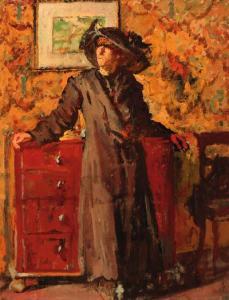 as ‘an attractive little laughing face with an impertinent nose and a coltish yet graceful figure’, is less naturalistically but more evocatively depicted in The Little Tea Party: Nina Hamnett and Roald Kristian, a double-portrait of Hamnett with her husband.
as ‘an attractive little laughing face with an impertinent nose and a coltish yet graceful figure’, is less naturalistically but more evocatively depicted in The Little Tea Party: Nina Hamnett and Roald Kristian, a double-portrait of Hamnett with her husband.
 that Sickert ‘spends at least two hours daily at teatime in holding forth. I always say “yes” and go home and do the opposite.’ Nevertheless, Hamnett greatly benefited from her association with Sickert and his circle although she perhaps preferred him as an entertaining host and raconteur than as a teacher and mentor. Her Portrait of Walter Sickert 1919 (private collection),
that Sickert ‘spends at least two hours daily at teatime in holding forth. I always say “yes” and go home and do the opposite.’ Nevertheless, Hamnett greatly benefited from her association with Sickert and his circle although she perhaps preferred him as an entertaining host and raconteur than as a teacher and mentor. Her Portrait of Walter Sickert 1919 (private collection),depicts him as middle-aged but rakishly handsome, suavely dressed in a suit and bow-tie with his bowler hat at a jaunty angle, the ‘Louis Waller
 of the art schools’ as he was apparently known (Waller was a film star of the day).Hamnett also posed for Sickert on occasions, both clothed and nude, and her appearance is recorded in a drawing from around 1916.Her appearance, described by Sickert’s friend Marjorie Lilly
of the art schools’ as he was apparently known (Waller was a film star of the day).Hamnett also posed for Sickert on occasions, both clothed and nude, and her appearance is recorded in a drawing from around 1916.Her appearance, described by Sickert’s friend Marjorie Lilly  as ‘an attractive little laughing face with an impertinent nose and a coltish yet graceful figure’, is less naturalistically but more evocatively depicted in The Little Tea Party: Nina Hamnett and Roald Kristian, a double-portrait of Hamnett with her husband.
as ‘an attractive little laughing face with an impertinent nose and a coltish yet graceful figure’, is less naturalistically but more evocatively depicted in The Little Tea Party: Nina Hamnett and Roald Kristian, a double-portrait of Hamnett with her husband.
The relationship captured by Sickert in The Little Tea Party was not a happy one. Hamnett remained legally married to the artist Edgar de Bergen for around forty years, while in actual fact their relationship only lasted about three years. The couple met in Paris in 1914 amid an exciting, artistic society that thrived in Montparnasse before the war and included members of the European avant-garde such as Constantin Brancusi, Amedeo Modigliani and Pablo Picasso. From the outset their relationship was characterised by a strange ambiguity and tension. In her autobiography, Hamnett later wrote:
The young man appeared to be a complete mystery. I was by this time desperately in love with him. Whether he liked me or not I have never been able to discover ... One afternoon Edgar said ‘How much does it cost to get married in England?’ and I said, ‘I think about seven-and-sixpence,’ and he said, ‘Let us get married!’ I said that I didn’t mind if I did ... After three weeks we got married [12 October 1914]. My Father paid the wedding licence. Everyone was very gloomy, including myself
The couple moved to Camden Town and continued to socialise with artists and European exiles in London. De Bergen, who claimed to be Norwegian, changed his name to Roald Kristian in order to sound less German.
Both did some work for Fry’s Omega Workshops and de Bergen published a series of woodcuts in the Egoist. However, their mutual interest in art was not a sufficient basis with which to overcome their basic incompatibility, and their relationship gradually deteriorated. Hamnett complained of becoming ‘more and more bored with Edgar who was daily becoming more soulful, and spoke in parables which I had long since given up attempting to understand’. He reacted badly when she became pregnant and was uncaring when their baby was born two months premature and died. She, in turn, was merely relieved when, in 1917, her husband was imprisoned for three months’ hard labour for failing to register as a foreigner. On his release from prison de Bergen was deported back to France to fight with the Belgian army and Hamnett never saw him again.
Both did some work for Fry’s Omega Workshops and de Bergen published a series of woodcuts in the Egoist. However, their mutual interest in art was not a sufficient basis with which to overcome their basic incompatibility, and their relationship gradually deteriorated. Hamnett complained of becoming ‘more and more bored with Edgar who was daily becoming more soulful, and spoke in parables which I had long since given up attempting to understand’. He reacted badly when she became pregnant and was uncaring when their baby was born two months premature and died. She, in turn, was merely relieved when, in 1917, her husband was imprisoned for three months’ hard labour for failing to register as a foreigner. On his release from prison de Bergen was deported back to France to fight with the Belgian army and Hamnett never saw him again.
Sickert’s painting captures much of the emotional strain of this unusual relationship. Husband and wife sit together in the corner of the room beside a table laid for tea.
De Bergen, who sits slumped on the sofa with his legs crossed smoking a cigar, stares disconsolately in front of him, and could almost act as an understudy for the ‘Hubby’ role in Ennui c.1914 (Tate N03846, fig.1). Hamnett sits perched on the edge of her seat, leaning forward as though in the middle of saying something to the artist. She is fashionably dressed in a long coat with a full fur collar and a small hat covering her short hair. The couple are nominally turned in towards each other and de Bergen’s knee just overlaps the same pictorial space as Hamnett’s arm, but each displays negative body language towards the other and seems hardly to notice their spouse’s presence. There is a discrepancy between the perceived gaiety of the ‘tea party’ and the evident unease of the protagonists, seated in a gloomy, cheerless interior. Like the couple in Ennui, de Bergen and Hamnett are pictured as trapped together in a dysfunctional relationship which is draining their lives of colour and interest. Sickert has left the faces of his sitters blurred and incomplete, yet nevertheless has produced an insightful and telling portrait of the couple.

Unlike the female model in Ennui, Hamnett’s stance is less passive and more confrontational. She maintains her equality with de Bergen by also smoking, holding the cigarette or cigar in her left hand while her right arm rests in a gesture of independence and slight belligerence on her hip. Her pose indicates her charismatic personality and unconventional lifestyle and she is the more domineering presence in the picture. Furthermore, the fact that she is wearing her outdoor coat and hat creates the impression that she has been induced to stay but may choose to leave at any moment.De Bergen, by contrast, seems to retreat from his wife by leaning back into the sofa. His appearance is more clearly recorded in a couple of preparatory drawings for the painting (see Tate N05619, fig.2) where he can be seen as a tall man with a spare frame and a thin face with high cheekbones. Sickert was not as well acquainted with de Bergen as he was with Hamnett, but he appeared to enjoy his company, describing him as ‘an acute and informed intelligence’. In the painting, however, he appears withdrawn, distant and nervously on edge.
It is interesting that when The Little Tea Party was first exhibited at the Carfax Gallery in 1916 it bore the title Nina Hamnett and Roald Kristian, reflecting the fact that the sitters were both well-known figures within the artistic community. Ten years later, when Hamnett was still a recognised name in bohemian London but her husband had long since departed and been forgotten, the painting was exhibited with the title Nina Hamnett and Anr.
Nina Hamnett died in 1956 from complications after falling out her apartment window and being impaled on the fence forty feet below. The great debate has always been whether or not it was a suicide attempt or merely a drunken accident. Her last words were, "Why don't they let me die?".It is interesting that when The Little Tea Party was first exhibited at the Carfax Gallery in 1916 it bore the title Nina Hamnett and Roald Kristian, reflecting the fact that the sitters were both well-known figures within the artistic community. Ten years later, when Hamnett was still a recognised name in bohemian London but her husband had long since departed and been forgotten, the painting was exhibited with the title Nina Hamnett and Anr.
The location of the painting is Sickert’s studio at 8 Fitzroy Street, 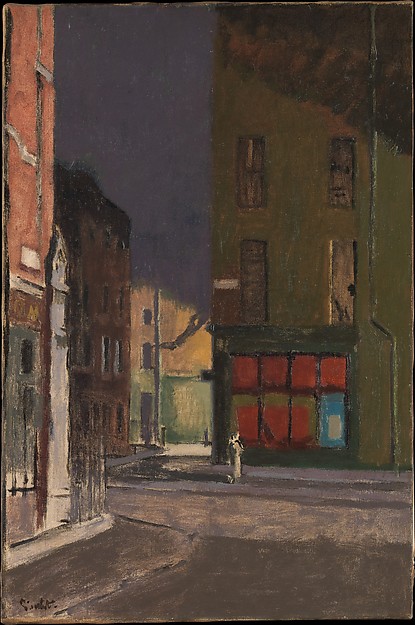 rooms which formerly belonged to James Abbott McNeill Whistler. Hamnett also used the studio on occasions to paint portraits when Sickert was out of town. Hamnett’s recollection in her 1932 autobiography that she and de Bergen posed for the picture on an ‘iron bedstead’ is at odds with the visual evidence of the painting and related preparatory drawings which clearly show the couple seated on a chaise-longue. This suggests that Hamnett conflated The Little Tea Party in her mind with Sickert’s more famous Camden Town Murder series in which the iron bedstead prominently featured. The painting shares the same predominance of dark shadows and black outlines,
rooms which formerly belonged to James Abbott McNeill Whistler. Hamnett also used the studio on occasions to paint portraits when Sickert was out of town. Hamnett’s recollection in her 1932 autobiography that she and de Bergen posed for the picture on an ‘iron bedstead’ is at odds with the visual evidence of the painting and related preparatory drawings which clearly show the couple seated on a chaise-longue. This suggests that Hamnett conflated The Little Tea Party in her mind with Sickert’s more famous Camden Town Murder series in which the iron bedstead prominently featured. The painting shares the same predominance of dark shadows and black outlines, but the application of paint is less broken and looks towards Sickert’s later technique. An alternative possibility is that the composition of the painting is the result of a combination of preparatory sketches drawn on different occasions. In a study for The Little Tea Party (Huddersfield Art Gallery), Hamnett’s figure has been added on top of the drawing of de Bergen on the sofa (see Tate N05619).
but the application of paint is less broken and looks towards Sickert’s later technique. An alternative possibility is that the composition of the painting is the result of a combination of preparatory sketches drawn on different occasions. In a study for The Little Tea Party (Huddersfield Art Gallery), Hamnett’s figure has been added on top of the drawing of de Bergen on the sofa (see Tate N05619). She was perhaps copied from another drawing in which she posed on a bed. The painting is unusual in that it depicts the tensions of a real relationship rather than one suggested by Sickert’s dramatic posing of Hubby, Marie and his other favourite models. Also, the presence of the male figure in this scene is diminished by the force of character of his female counterpart and is therefore devoid of the latent masculine menace of the Camden Town Murder pictures. The unhappy discomfort of the pair is mirrored by the shabby, grim nature of their surroundings, although in common with Sickert’s other interiors, it is a set-up staged within a studio. The chaise-longue, for example, features in other works, such as the drawing Woman Lying on a Couch c.1911 (University of Reading).
She was perhaps copied from another drawing in which she posed on a bed. The painting is unusual in that it depicts the tensions of a real relationship rather than one suggested by Sickert’s dramatic posing of Hubby, Marie and his other favourite models. Also, the presence of the male figure in this scene is diminished by the force of character of his female counterpart and is therefore devoid of the latent masculine menace of the Camden Town Murder pictures. The unhappy discomfort of the pair is mirrored by the shabby, grim nature of their surroundings, although in common with Sickert’s other interiors, it is a set-up staged within a studio. The chaise-longue, for example, features in other works, such as the drawing Woman Lying on a Couch c.1911 (University of Reading).
 rooms which formerly belonged to James Abbott McNeill Whistler. Hamnett also used the studio on occasions to paint portraits when Sickert was out of town. Hamnett’s recollection in her 1932 autobiography that she and de Bergen posed for the picture on an ‘iron bedstead’ is at odds with the visual evidence of the painting and related preparatory drawings which clearly show the couple seated on a chaise-longue. This suggests that Hamnett conflated The Little Tea Party in her mind with Sickert’s more famous Camden Town Murder series in which the iron bedstead prominently featured. The painting shares the same predominance of dark shadows and black outlines,
rooms which formerly belonged to James Abbott McNeill Whistler. Hamnett also used the studio on occasions to paint portraits when Sickert was out of town. Hamnett’s recollection in her 1932 autobiography that she and de Bergen posed for the picture on an ‘iron bedstead’ is at odds with the visual evidence of the painting and related preparatory drawings which clearly show the couple seated on a chaise-longue. This suggests that Hamnett conflated The Little Tea Party in her mind with Sickert’s more famous Camden Town Murder series in which the iron bedstead prominently featured. The painting shares the same predominance of dark shadows and black outlines, but the application of paint is less broken and looks towards Sickert’s later technique. An alternative possibility is that the composition of the painting is the result of a combination of preparatory sketches drawn on different occasions. In a study for The Little Tea Party (Huddersfield Art Gallery), Hamnett’s figure has been added on top of the drawing of de Bergen on the sofa (see Tate N05619).
but the application of paint is less broken and looks towards Sickert’s later technique. An alternative possibility is that the composition of the painting is the result of a combination of preparatory sketches drawn on different occasions. In a study for The Little Tea Party (Huddersfield Art Gallery), Hamnett’s figure has been added on top of the drawing of de Bergen on the sofa (see Tate N05619). She was perhaps copied from another drawing in which she posed on a bed. The painting is unusual in that it depicts the tensions of a real relationship rather than one suggested by Sickert’s dramatic posing of Hubby, Marie and his other favourite models. Also, the presence of the male figure in this scene is diminished by the force of character of his female counterpart and is therefore devoid of the latent masculine menace of the Camden Town Murder pictures. The unhappy discomfort of the pair is mirrored by the shabby, grim nature of their surroundings, although in common with Sickert’s other interiors, it is a set-up staged within a studio. The chaise-longue, for example, features in other works, such as the drawing Woman Lying on a Couch c.1911 (University of Reading).
She was perhaps copied from another drawing in which she posed on a bed. The painting is unusual in that it depicts the tensions of a real relationship rather than one suggested by Sickert’s dramatic posing of Hubby, Marie and his other favourite models. Also, the presence of the male figure in this scene is diminished by the force of character of his female counterpart and is therefore devoid of the latent masculine menace of the Camden Town Murder pictures. The unhappy discomfort of the pair is mirrored by the shabby, grim nature of their surroundings, although in common with Sickert’s other interiors, it is a set-up staged within a studio. The chaise-longue, for example, features in other works, such as the drawing Woman Lying on a Couch c.1911 (University of Reading).
The Little Tea Party was bought from the Carfax Gallery in 1916 by Sylvia Gosse (see Tate N04364) , probably as a gesture of financial support for the artist. A later owner, Howard Bliss, the brother of the composer Sir Arthur Bliss, was a modest but important collector of largely contemporary art. He started collecting in the 1940s and in addition to Sickert, owned work by Louis le Brocquy, John Piper, John Craxton and Terry Frost. He was a friend and significant patron of the painter, Ivon Hitchens, amassing the most important collection of work by that artist.
, probably as a gesture of financial support for the artist. A later owner, Howard Bliss, the brother of the composer Sir Arthur Bliss, was a modest but important collector of largely contemporary art. He started collecting in the 1940s and in addition to Sickert, owned work by Louis le Brocquy, John Piper, John Craxton and Terry Frost. He was a friend and significant patron of the painter, Ivon Hitchens, amassing the most important collection of work by that artist.
 , probably as a gesture of financial support for the artist. A later owner, Howard Bliss, the brother of the composer Sir Arthur Bliss, was a modest but important collector of largely contemporary art. He started collecting in the 1940s and in addition to Sickert, owned work by Louis le Brocquy, John Piper, John Craxton and Terry Frost. He was a friend and significant patron of the painter, Ivon Hitchens, amassing the most important collection of work by that artist.
, probably as a gesture of financial support for the artist. A later owner, Howard Bliss, the brother of the composer Sir Arthur Bliss, was a modest but important collector of largely contemporary art. He started collecting in the 1940s and in addition to Sickert, owned work by Louis le Brocquy, John Piper, John Craxton and Terry Frost. He was a friend and significant patron of the painter, Ivon Hitchens, amassing the most important collection of work by that artist.A biography, Nina Hamnett: Queen of Bohemia, by Denise Hooker was published in 1986.
In 2011 Nina Hamnett was the subject of a short film by writer/director Chris Ward 'What Shall We Do With The Drunken Sailor' starring Siobhan Fahey
 the singer of Bananarama and Shakespear's Sister fame.
the singer of Bananarama and Shakespear's Sister fame.She made appearances in Soho as the arty crowd moved south of Oxford Street, but Nina in her last years was drunk and unpredictable, peeing on the furniture and throwing up in her handbag before staggering home to Paddington. Her second biography, Is She A Lady, was described as rambling, disjointed and inconsequential; sadly, so was Nina.
The gipsy I knew when I came to Paris was called Fenella.She had been discovered, sitting on a doorstep in London, by Ransome. She had posed for Augustus John and I had seen several drawings of her at his exhibition at the Carfax Galleries. She looked like a bird. She had a very long neck and large rather protruding eyes. She wore a tight dress with silver buttons down the front and shoes like I did, with straps. She had the prettiest legs and smallest feet that I have ever seen. She played a guitar and sang. She spoke about ten languages and sang in sixteen, including Japanese. She was supposed to be consumptive and drank soda-water and milk. She had a drawer-full of louis d'or, one of which she lent me one day ajid which I gave back.
She came to my party and sang. We bought bottles of wine at fifty centimes a bottle and it was quite drinkable. At five a.m. we went to the Rotonde
and sat there till nine o'clock. There was a very amusing and clever painter called Charles Winzer
and every evening we three would meet at the Rotonde. We wrote poems. I wrote the last words of the poems, four of which had to rhyme and a fifth that did not, and they wrote in the poems. They were very funny and we spent the whole evening laughing at them. My friend Basil, whom I quarrelled with periodically, was cut off by his parents every few weeks
and had to return to England to pacify his Mother. My thirty pounds was melting away and I feared that I would have to return to England. One day he came back having got quite a lot of money. I said, " I shall have to go back to London. " He said, " You must not go, I will buy two water-colours." So he gave me some money and I stayed on.One was a drawing I had done in 1912, when I stayed with a friend in Dorset. It was of a fair at Gorfe Castle and was quite good. Basil left them at my place as he was going to Italy; he never collected them as he never had a place to put them in, so I kept them for him.
He was after wards killed in the War, and last year I had an
ExExhibition in Berkeley Street at the Galitzine Gallery and exhibited " the Fair/'
A strange man, whom I did not know, came and bought it for ten guineas. Basil was going to Italy with a friend of his; he wanted me to go too. He said, cc My friend, who is an elderly man, will chaperonc you." His friend arrived in Paris and I met a most; charming man who certainly was not over thirty. I did not go. They went and I received telegrams daily from Venice to join them. I think I was foolish not to have gone now, as I should have got into much less trouble than I did by staying in Paris. I clid not realize at the time how genuinely fond of me he was and I still hankered after the pale creature at the Rotonde. I regretted very much when I heard in 1915 that he had been killed in Mesopotamia.
I received a postcard from him, written the day before he died. In the Quarter were two Japanese. They were known as " Les Japonais" They were a great success at parties. One was Foujita,
who has since become world famous, and the other was Kavashima who is also a well-known painter and spends his life in Germany and America. They were pupils of Raymond Duncan. They wove the material that their clothes were made of and made their own sandals. They wore their hair in fringes with bands of ribbon round their heads, and Greek robes and sandals. They danced Greek dances and worked all day. Diego Rivera,
the Mexican artist, did a Cubist painting of them both together with square faces. It was exactly like them, although far from realistic. It was what Jean Gocteau would describe as "plus vrai que le vrai."
Kisling,

the Polish painter, came each evening to the Rotonde.He wore his hair with a fringe too. He was thin and very good-looking.
Moise Kisling was a Polish painter. Born in Kraków, Austria-Hungary, he studied at the School of Fine Arts in Kraków, where he was encouraged to travel to the center for artistic creativity in the early 20th century, Paris, France.
In 1910, Kisling moved to Montmartre and a few years later to Montparnasse. At the outbreak of World War I he volunteered for service in the French Foreign Legion, and in 1915 he was seriously wounded in the Battle of the Somme, for which he was awarded French citizenship.
Kisling lived and worked in Montparnasse where he was part of the renowned artistic community gathered there at the time. For a short time he lived in the Bateau-Lavoir in Montmartre
in Montmartre and in 1911–12 spent nearly a year at Céret.
and in 1911–12 spent nearly a year at Céret. In 1913 he took a studio in Montparnasse, where he lived for the next 27 years; Jules Pascin and later
In 1913 he took a studio in Montparnasse, where he lived for the next 27 years; Jules Pascin and later  Modigliani lived in the same building. He became close friends with many of his contemporaries, including Amedeo Modigliani, who painted him in 1916 (today at the Musee d'Art Moderneas). His style used in painting landscapes is similar to that of Marc Chagall, but, a master at depicting the female body, his surreal nudes and portraits earned him the widest acclaim.
Modigliani lived in the same building. He became close friends with many of his contemporaries, including Amedeo Modigliani, who painted him in 1916 (today at the Musee d'Art Moderneas). His style used in painting landscapes is similar to that of Marc Chagall, but, a master at depicting the female body, his surreal nudes and portraits earned him the widest acclaim.
Kisling volunteered for army service again in 1940. When the French Army was discharged at the time of the surrender to the Germans, Kisling who was of Jewish origin went to the United States and, after exhibitions in New York and Washington, lived in California until 1946.
Moise Kisling died in Sanary-sur-Mer, Var, Provence-Alpes-Côte d'Azur, France on April 29, 1953. A residential street in the town is named after him.
France on April 29, 1953. A residential street in the town is named after him.
The largest collection of Kisling's works can be seen at the Musée du Petit Palais in Geneva,
In 1910, Kisling moved to Montmartre and a few years later to Montparnasse. At the outbreak of World War I he volunteered for service in the French Foreign Legion, and in 1915 he was seriously wounded in the Battle of the Somme, for which he was awarded French citizenship.
Kisling lived and worked in Montparnasse where he was part of the renowned artistic community gathered there at the time. For a short time he lived in the Bateau-Lavoir
 in Montmartre
in Montmartre and in 1911–12 spent nearly a year at Céret.
and in 1911–12 spent nearly a year at Céret. In 1913 he took a studio in Montparnasse, where he lived for the next 27 years; Jules Pascin and later
In 1913 he took a studio in Montparnasse, where he lived for the next 27 years; Jules Pascin and later  Modigliani lived in the same building. He became close friends with many of his contemporaries, including Amedeo Modigliani, who painted him in 1916 (today at the Musee d'Art Moderneas). His style used in painting landscapes is similar to that of Marc Chagall, but, a master at depicting the female body, his surreal nudes and portraits earned him the widest acclaim.
Modigliani lived in the same building. He became close friends with many of his contemporaries, including Amedeo Modigliani, who painted him in 1916 (today at the Musee d'Art Moderneas). His style used in painting landscapes is similar to that of Marc Chagall, but, a master at depicting the female body, his surreal nudes and portraits earned him the widest acclaim.
Kisling volunteered for army service again in 1940. When the French Army was discharged at the time of the surrender to the Germans, Kisling who was of Jewish origin went to the United States and, after exhibitions in New York and Washington, lived in California until 1946.

Moise Kisling died in Sanary-sur-Mer, Var, Provence-Alpes-Côte d'Azur,
 France on April 29, 1953. A residential street in the town is named after him.
France on April 29, 1953. A residential street in the town is named after him. The largest collection of Kisling's works can be seen at the Musée du Petit Palais in Geneva,

He had a dis
pute with a painter called Gottlieb and they
arranged to fight a duel.
Gottlieb was born in New York to Jewish parents. Before his skills had fully developed he studied at the Académie de la Grande Chaumière in Paris. After his 1930’s one man show he won respect amongst his peers. In 1935, he and nine others, including Ben-Zion
From 1937-1939, Gottlieb
 lived in the Arizona desert, and taking the cue from his environment he painted cacti and barren scenery. He transitioned from this into more Surrealist works like the Sea Chest which displays mysterious incongruities on an otherwise normal landscape. He expresses space most fully in his mature works. It is then that he conveys to the viewer the expansiveness he must have felt looking at Arizona desert sky, although he distills this expansiveness into a more basic abstract form.
lived in the Arizona desert, and taking the cue from his environment he painted cacti and barren scenery. He transitioned from this into more Surrealist works like the Sea Chest which displays mysterious incongruities on an otherwise normal landscape. He expresses space most fully in his mature works. It is then that he conveys to the viewer the expansiveness he must have felt looking at Arizona desert sky, although he distills this expansiveness into a more basic abstract form. Rivera was one of the
seconds. They went out of Paris. A cinema man
with a camera was there and we saw it on the
pictures the same evening. Kisling came to the Rotonde with a cut on his nose and was considered a great hero. I think that if he had washed the blood off it would not have been visible. Very seldom we went to Montmartre. I went once to the Lapin Agile.Ghil (note the pun) was an old man who looked like the cc old man of the sea." He wore a fur cap and had a long beard. This was the cabaret where Picasso and Max Jacob and all the
famous painters and writers went years before 3 when the artists lived in Montmartre, and when it was really cheap and very gay. I took a violent dislike to the old man and could not go there without having a row with him. There was a life-size plaster cast of Christ, on which the students had carved their names; it was carved from head to foot with signa tures and looked as if it was suffering from smallpox. I believe that I signed it too. We drank small plums in Kirsch and poets recited bad poems and Monsieur Ghil played a very fine guitar. I did not like the atmosphere of Montmartre, or the people, and I think only went there twice during my whole stay
. I went to the Moulin Rouge once and saw elderly ladies in long skirts doing the can-can.
That was fun as they looked just like the drawings of Toulouse Lautrec, and, in fact, I think were the same ladies having grown considerably older.
The Cafe du D6me was opposite the Rotonde.
It was filled with Germans and Americans. I very seldom went there. The Americans had a poker game every evening. This continued for about twenty years, and only broke up a few years ago. I did not know any Americans,
but Basil used to play poker with them in the evenings, and some times made quite a lot of money which we would spend together. He would tell me funny stories about them. A large man with a red beard went out to the other side of the river to dine with his relations. He wore a dinner jacket. After he had disposed of his relatives he went to Montmartre and then to " Les Halles," where everyone ended
amongst the cabbages and onions. He returned to Montparnasse in a very battered condition at eight-thirty in the morning. Along the Boulevard Montparnasse was a tramway, and the road between the tram-lines was dug up for repairs, leaving a hole about six feet deep. The red-bearded man felt sleepy and got down the hole and went to sleep.


No comments:
Post a Comment